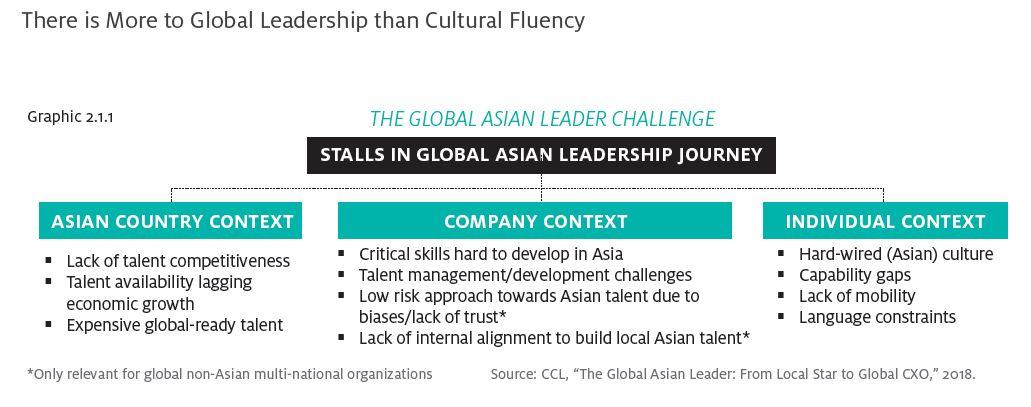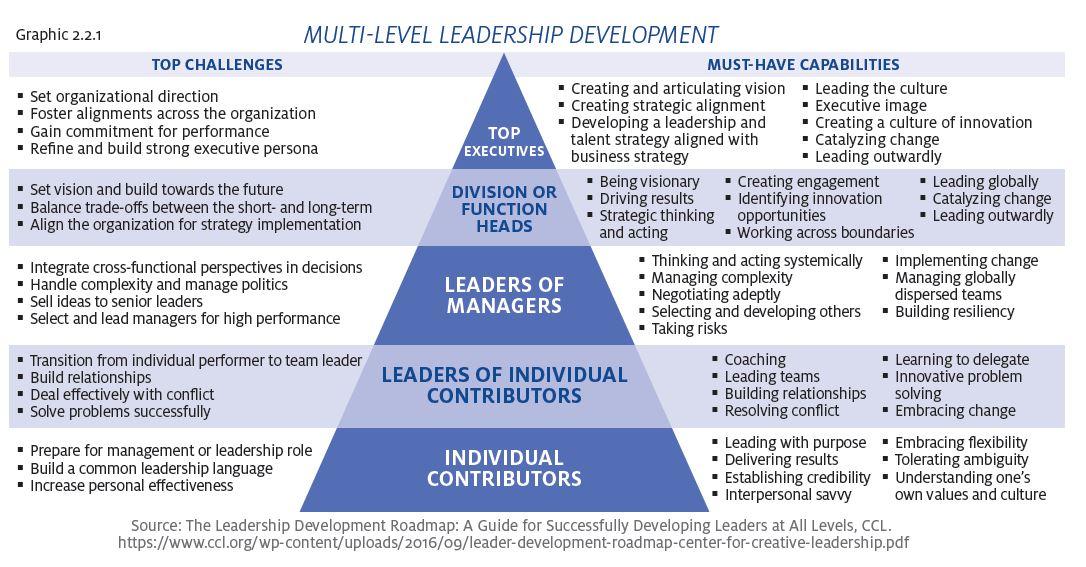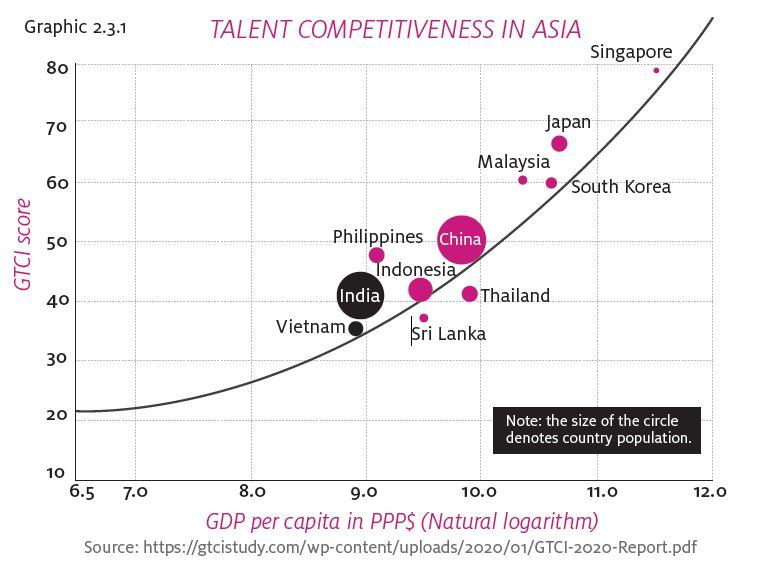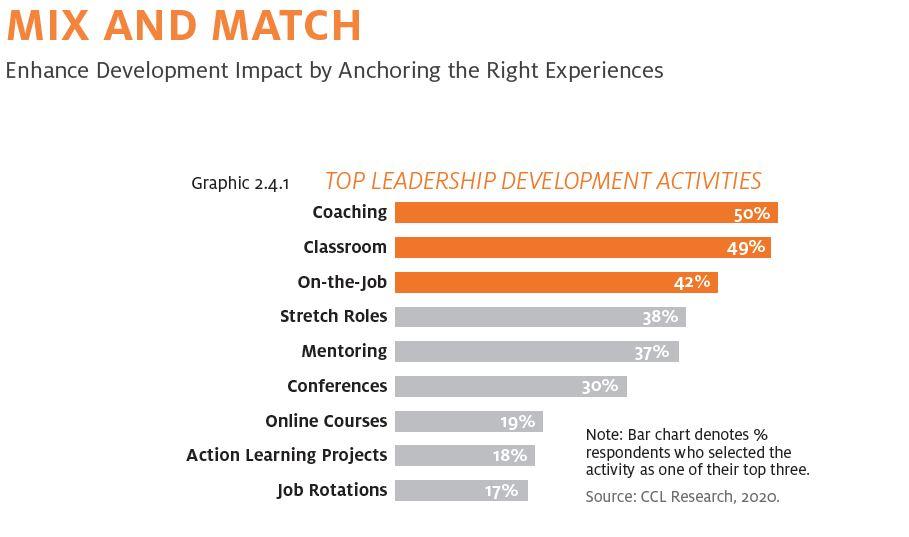share on
The past few months have brought about unprecedented disruption and, in the process, has challenged all of our assumptions on business models, workflows, technology, and people.
As a result, HR and leadership functions are under extreme pressure not only to develop leaders to deal with the here-and-now challenges, but also to proactively prepare organisations for the long road to recovery. And with it, comes the opportunity to reset the leadership development function, and view it with an objective lens, without biases and prejudices.
Through it all, it isn't uncommon to come across myths about developing leaders - be it about leaders in Asia, or that leadership development should primarily focus on top-level executives.
This article summarises seven common myths uncovered in a recent report by the Center for Creative Leadership in partnership with ADP, titled Developing future-fluent Asian leaders – Myths we must debunk, based on a survey of 248 senior HR leaders across Asia.
Myth #1 Asian leaders are harder to develop to take on senior global leadership roles

According to about four in 10 respondents (41%), this came up as one of their top three myths heard.
While there is an ever-increasing need for global Asian leaders - leaders who can build local business, advise global organisations how to win in Asia, and help local organisations with regional aspirations expand outside of the home country - such talent remains a rare commodity. For instance, leaders of Asian origin account for only 4% and 8% of executive leadership teams in Europe and US-headquartered companies respectively.
As shown in the graphic above, there are three distinct reasons that are holding back Asian leaders from stepping into global roles:
- Unfavourable country conditions
- Constraints due to organisation culture
- Individual skill and will issues
The report also highlighted that a lack of talent competitiveness or inadequate talent development infrastructure may inhibit growth of talent at a country level, while organisation culture may also be a key culprit.
This may be due to the inability to develop global-ready leaders due to lack of necessary experience, budget constraints, structural and policy issues, lack of global mindset in senior leaders, non-optimal global talent management and development practices, or lack of clear accountability to develop Asian talent. Individual capability and aspiration issues may also inhibit growth of local talent.
Apart from that, Asian leaders may find it hard to adjust to a 'typical' MNC work style as there may be some cultural nuances that may put an Asian leader at a comparative disadvantage; while a lack of mobility may further constrain Asian leaders’ ability to take on global roles.
Thus, the report noted that organisations must curate compelling development plans to create a strong pipeline of global Asian leaders.
Myth #2: Leadership development efforts should focus primarily on top-level executives

Organisations typically spend an extraordinary amount of time and resources on leadership development for their senior executives, while often falling short on leadership development for front-line and mid-level managers, a considerably bigger community of leaders who can influence the company’s performance quite significantly.
Two in five leaders surveyed felt that one of the biggest misconceptions about leadership development is that it is only for the senior leaders who play a 'strategic' role and, thus, any investment towards leadership development should therefore overtly lean towards senior executives.
In fact, research also showed that although front-line managers make up or influence 80% of the workforce, this group only receives about one-fourth of a typical company's leadership development efforts.
The reasons for this imbalance could possibly be because of leadership budgets being controlled by senior leaders (and hence senior leadership challenges taking priority); or, 'leadership' being viewed as largely strategic and hence a bias to only train senior leaders who do 'more strategic' roles.
Further, the report also noted a more short term return-on-leadership development investment as a potential reason, leading to such initiatives being rolled out only for senior leaders.
Therefore, to maximise ROI on development initiatives, leaders must make leadership development programmes must happen across multiple levels in the organisation.
Myth #3: Organisations can have one uniform approach to developing leaders across different regions, countries, and contexts

This was identified as a top myth by 39% of HR leaders surveyed.
While organisations often extend their global leadership development programs developed at their headquarters or at the group level (by central leadership development teams) to different countries, such programmes may only have limited relevance in Asia. Western business norms may not apply in many Asian countries.
For instance, Asian collectivism versus western individualism, command economies versus free economies, and so on.
Even from a culture standpoint, organisations often talk of Asia as one big block. Asia, however, seems to be an identity but does not subscribe to one culture. For instance, while a Singaporean leader may be an expert executor, an Indian leader may be more comfortable with uncertainties. While a Chinese leader may be comfortable taking unpopular decisions, a Javanese executive from Indonesia will refrain from doing so, the report highlighted.
Thus, for maximum impact, organisations aspiring to develop global Asian leaders need to cater to such cultural and market differences.
Myth 4: Attending (only) leadership development courses will make you a better leader

According to the survey, 37% of leaders thought so. However, that's not the case. These days, more organisations are looking at alternatives to in-person development programmes. These include on-the-job training, crucible or stretch roles, and mentoring.
In fact, the respondents shared that while classroom experiences expose leaders to new knowledge and help develop new skills, permanence and longevity of the skills and formation of new behaviours typically happen through experiences, on-the-job roles, coaching, mentoring experiences, and more.
Myth #5: HR can lead and execute the leadership development agenda without top leadership team/board buy-in
About one in three survey respondents (30%) in the study selected this myth.
"There seems to be a contradiction; there is a huge shortage of quality leaders, and leadership development is the biggest worry in everybody’s mind, yet people don’t want to invest in the development agenda," said Mohan Chakasaril Korah, Advisory Board Member, THP Group, Vietnam.
HR leaders will find it hard to push the leadership development agenda without senior leadership support, since they can influence the resources for development, and demonstrate their intent to free up their team leaders for interventions and journeys. Besides, the lack of leader buy-in may hurt leadership development initiatives indirectly since the leaders will not walk the (necessary) talk to instil developmental culture within the organisation.
Mukta Arya, Head of Human Resources, Asia Pacific, Société Générale, aptly puts it: "Senior management needs to buy-in to the leadership development agenda; without champions at the C-suite and Board level, scaling up leadership development is impossible to execute."
Myth #6: Effective leadership development can happen irrespective of the organisation's culture
Nearly one-third of the survey respondents (29%) chose this as a top-three myth.
However, the respondents noted that great leaders help employees set and manage personal drivers (commitment) that tie back to the larger organisational goals (direction); in the process, employees get a better sense of how their work contributes to the organisation’s success (alignment).
These are three levers organisations can deploy to curate a workplace where leaders are able to develop skills to help employees make this connect:
- Smarter talent acquisition
- Better emerging leader identification process
- Comprehensive development process
Myth #7: Online/digital learning is less effective than classroom learning
Slightly more than one-fifth (22%) of respondents chose this as one of their top three myths. That said, these respondents highlighted that introducing a human element to create hybrid solutions makes digital more compelling.
Stephanie Nash, Chief People Officer, ChapmanCG, advocated for the right mix of digital and in-person learning: "Got to be a blend of both - technology helps with scale and access at the right time, while personal interactions are also critical since we are still dealing with humans."
She reiterated, "I continue to believe human interactions will remain important in the future because if we move everything to be technology-based then there is a risk of running into increasing exposure of our data, and ethical issues around artificial intelligence."
Therefore, it should be noted that digital learning can be equally as impactful as classroom learning if designed well.
Commenting on the overall insights, John Antos, Vice President Strategy & Marketing APAC, ADP, said: "If business leaders want to become leaders of the 21st century, they will need tremendous agility to keep up with the pace of change. Huge uncertainties in the future mean leaders must have the ability to anticipate the future and work back toward the near term.
"One of the most interesting insights to emerge from the research was the push to open up leadership development within Asian organisations in order to foster multilevel leadership development."
What keeps CHROs up at night?
Apart from the above, the survey also asked the respondents what their key HR initiatives were for the next 12 to 18 months. For almost half of them (49%), this involved developing the key skills and competencies of their workforce, while close to that number (47%) would prioritise developing their current and future leadership bench.
In addition to these, the following key HR initiatives were also noted as a focus in the coming months:
- Change management (28%)
- Digital transformation of HR (28%)
- Employee experience (26%)
- Diversity & inclusion initiatives (23%)
- Big data/analytics for HR (17%)
Photo / 123RF
Human Resources Online is on Telegram! Follow us @humanresourcesonline or click here for all the latest weekly HR and manpower news from around the region.
share on
Follow us on Telegram and on Instagram @humanresourcesonline for all the latest HR and manpower news from around the region!
Related topics


